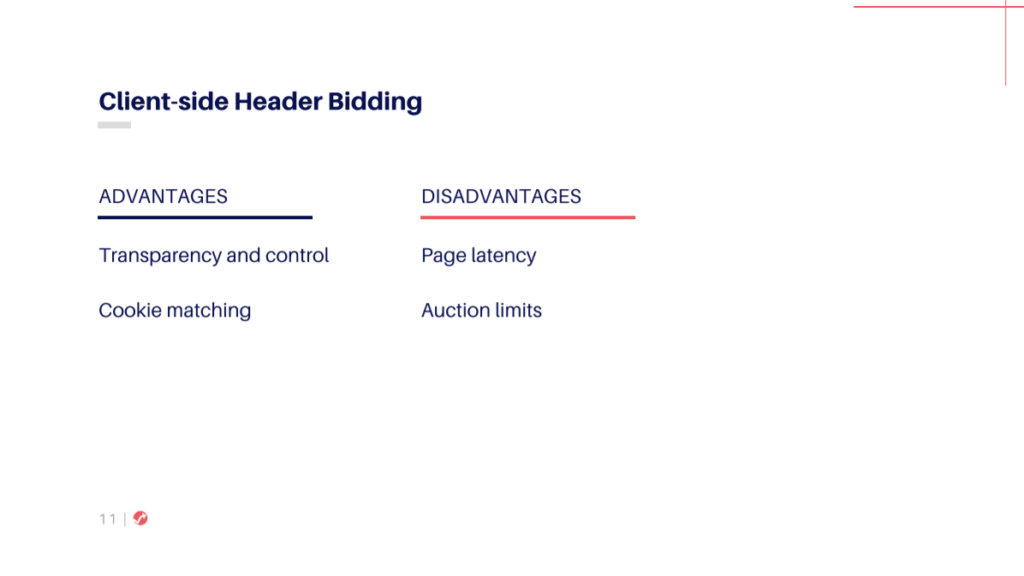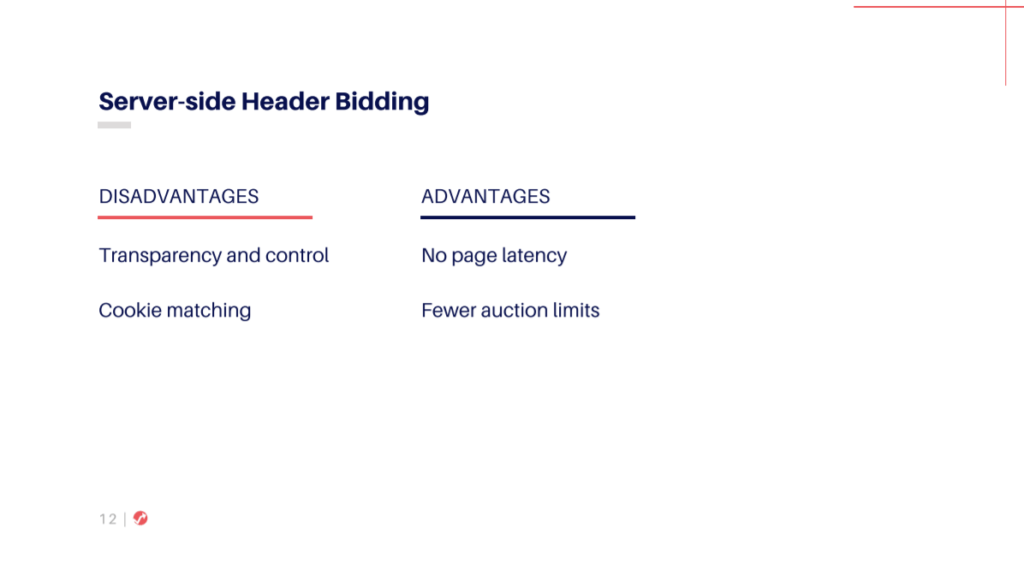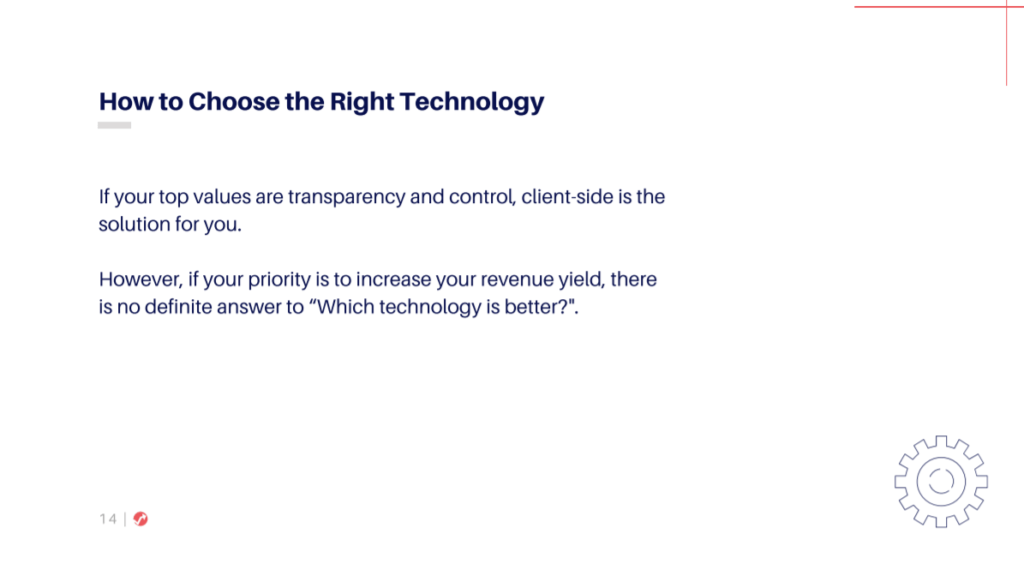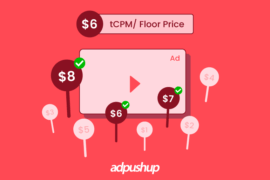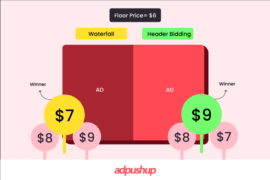Considering that Amazon started building its advertising technology and header bidding offerings much later than other players in the market—its adoption has been nothing short of meteoric.
According to the Header Bidding Index created by Kevel, Amazon is now the third most popular bidder, behind only AppNexus and Index Exchange. It also has one of the most popular S2S header bidding wrappers.
There are two key reasons for this growth:
- As a demand partner, Amazon provides publishers access to its lucrative product ads. Since Amazon has extensive first-party data about its customers, these ads have high purchase intent, better targeting, and therefore higher engagement rates.
- As a technology provider, Amazon has a reputation for building robust platforms, and specifically in the context of ad technology—its aggressive pricing models are focussed on reducing the so-called “ad tech tax” for publishing partners.
Amazon is now the third most popular bidder, behind only AppNexus and Index Exchange.
In this article, we’re going to look into the key advertising offerings for publishers by Amazon and some frequently asked questions about them.
Amazon’s Transparent Ad Marketplace (TAM) & Unified Ad Marketplace (UAM)
Amazon offers two header bidding solutions called Transparent Ad Marketplace (TAM) and Unified Ad Marketplace (UAM). Both of these work on a server-side model similar to Google Open Bidding (previously called EBDA)—but the offerings differ based on intended users.
TAM is targeted to enterprise publishers, it provides them with a server-to-server header bidding wrapper, direct demand from Amazon, and the ability to onboard additional supply-side partners based on their particular needs. Amazon does not charge publishers anything to use the platform and instead charges bidders a nominal $0.01 CPM as cost-of-entry.
Want to know more about Header Bidding? Click here.
UAM is also a server-to-server header bidding wrapper, but it is targeted to small and medium publishers, who don’t usually have direct SSP relationships. With UAM, Amazon makes its own SSP partnerships available to these publishers, which includes OpenX, Pubmatic, District m, AppNexus, Rubicon Project, RhythmOne, and Adtech.com.
The pricing model for UAM is different too, as reported by Digiday, “UAM charges a 10 percent transaction fee by deducting 10 percent from SSP bid prices prior to conducting a first-price auction.”
UAM unifies payments and works on a Net-60 basis, so publishers don’t need to follow-up with SSPs individually. In terms of prerequisites, you need a Google Ad Manager (DFP) account to get started.
Obviously, due to the nature of the offerings, TAM requires more extensive initial setup on the part of the publishers to make the most of the platform, while UAM offers a plug-and-play solution where Amazon handles all the supply partnerships on behalf of the publishers.
Deploy Server-side, Client-side, or Both?
Since TAM is targeted to enterprise publishers and the entry requirements are not clear, most publishers who want to start using Amazon’s wrapper or demand will look at UAM.
As previously discussed, UAM is a server-side header bidding wrapper. Since Prebid is the most popular header bidding wrapper, most publishers considering UAM are probably already running Prebid. Then there’s Google’s server-side solution, Open Bidding, to consider too.
Can you use all of them together? What will be the advantages and disadvantages of such a setup? Generally speaking, the more demand partners you have—the better your impression-level revenue and yield. And at least in theory, there’s nothing stopping publishers from running Prebid, UAM, and Open Bidding together at the same time. You could plug all three of them into ad server (like Google Ad Manager) and let the best bid win.
Here are some advantages to adding UAM to your ad stack:
- Premium demand: As previously explained, the product ads from Amazon are highly targeted and since e-com is Amazon’s primary business—it’s willing to pay top dollar to drive purchases.
- Revenue uplift: Having more demand in your stack has two benefits. First, more bids compete for your impressions, maximising impression-level revenue. And second, it may prompt demand partners to increase their bids to compete with others.
Do consider some possible downsides though:
- Complexity: Setting up and managing just one header bidding wrapper, like Prebid for example, is complicated enough. If you want to run client-side and server-side wrappers together—you’ll need to spend considerable time setting them up, and also need to constantly monitor them to make sure the auctions are running fine.
- Latency: Server-to-server header bidding auctions are usually faster since they don’t consume computing resources at the client-side, so adding UAM into the mix should not add too much latency, but it is something you will need to keep an eye out for.
Also check out our webinar on Types of Header Bidding to know more about whether to go client-side or server-side header bidding:
How to Integrate UAM with DFP
Getting started with UAM is simple. You’ll need to connect your DFP account, place the JavaScript snippet on your website, and update the ads.txt file. The steps are detailed below.
DFP side
- Enable DFP Access: Sign in with your DFP username and password to enable access.
- Select DFP Networks: If you have multiple Networks defined in your DFP account, select the one you want to integrate UAM with.
- Enable API Access: UAM handles line item setup programmatically using the DFP API. To enable access, go to Global Settings > Network Settings and enable “API Access”
- Push Line Items: Finally, push line items from UAM to DFP. Amazon will push one test line item and one production line item to begin with.
Website side
- Add a new site: Add and verify the ownership of your website.
- Update ads.txt file: You’ll need to update your ads.txt files with the entries for new demand partners provided by UAM.
- Insert JavaScript snippet: There are multiple ways to integrate UAM. You can run it as a standalone offering, run it sequentially or in parallel with Prebid, or with other header bidding solutions. The final JS code will depend on your chosen integration method.
As with most experiments related to revenue optimization, our advice to publishers is to test running UAM with your current ad stack and let the performance and results guide your decision.
If the increase in bid competition from using multiple bidders outweighs the effort spent in setup and management, then using UAM along with Prebid/Open Bidding can work for you.
AdPushup’s Header Bidding Solution
Merely deploying header bidding in your ad stack isn’t enough. Consistently optimizing it with technical improvements is the need of the hour. This is what AdPushup’s header bidding solution does. Through our multiple optimization features using data science and machine learning, we help publishers maximize their yield.
With our header bidding solution, you get:
- Automatic demand partner selection according to optimum requirements
- Smart timeout management
- Freedom to bring your own demand
- Bid monitoring and discrepancy resolution
Read more about our product capability: Header Bidding

Shubham is a digital marketer with rich experience working in the advertisement technology industry. He has vast experience in the programmatic industry, driving business strategy and scaling functions including but not limited to growth and marketing, Operations, process optimization, and Sales.

